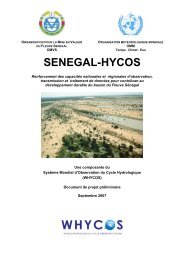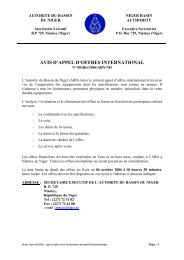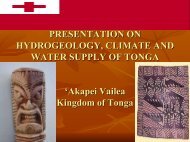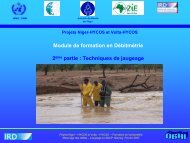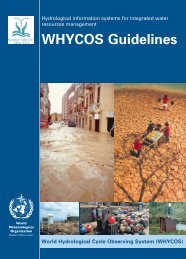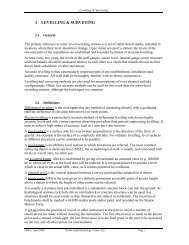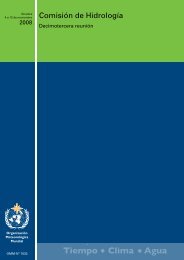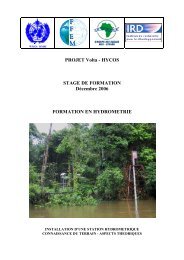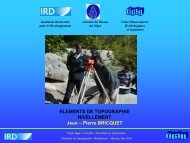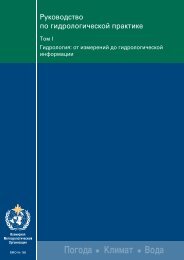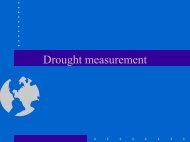Part I - FTP Directory Listing - WMO
Part I - FTP Directory Listing - WMO
Part I - FTP Directory Listing - WMO
You also want an ePaper? Increase the reach of your titles
YUMPU automatically turns print PDFs into web optimized ePapers that Google loves.
22 ABRIDGED FINAL REPORT OF THE THIRTEENTH SESSION OF THE COMMISSION FOR HYDROLOGY– Technical Regulations,– Guide to Hydrological Practices,– Manuals,– Guidance material: guidelines,– Technical documents.Information on some of the relevant technical guidance documents, currently under revision, isgiven in Table 1. In the formulation of guidance for NHSs on approaching QMF and documentationof technical approaches within the QMF, the CHy would make use of the existing best technicalpractices and approaches that have been developed by other organizations and take advantage ofthe ISO standards. The working agreement 4 with the International Organization forStandardization, which includes the subject of hydrology, would be used for the preparation of jointstandards as outlined in the agreement. CHy would keep the options open for the possibility ofworking jointly with other organizations that promote the development of standards in hydrology.CHy would advance the use of definitions adopted by ICTT QMF when considering activities andprocesses within the provision of hydrological data, products and services. The ICTT QMF definesa process as a set of interrelated activities, which transforms inputs into outputs. Each of theprocesses could in turn consist of sub-processes and activities or steps that are necessary toarrive at the observation. The technical guidance document for the specific process wouldinherently consider and possibly articulate various approaches to sub-processes and theirinteractions in arriving at an “observation.”For example, hydrological observations such as, but not limited to, the following components andprocesses could consist of:• Hydrometry: Measurements of:StageVelocityWater temperatureSuspended sediment concentration and bed loadWater quality (surface water and groundwater: diverse variables)Soil moistureGroundwater levelEvaporation and evapotranspirationRate and volume of groundwater abstraction• Climatological observations for hydrological purposes:Precipitation (diverse variables)Snow cover (diverse variables)Snow water equivalenceAir temperatureWind speed and directionSolar radiationApart from observations, some hydrological processes are usually considered by practitioners tobe derived using observations combined, at times, with the use of models and judgment. Someexamples of these would include, but are not limited to, aspects such as the estimation of actualevaporation, rates and volumes of groundwater recharge and stream flow (discharge). Thederivation of discharge data includes aspects such as data processing and storage (including thederivation of rating curves and their adjustments, and the conversion of stage into discharge).The provision of hydrological forecasts, which includes in general stream flow forecasting andspecifically flash flood forecasting, flood forecasting, low flow forecasting and flow forecasting,could be considered as hydrological products. Other commonly developed hydrological products4 See the agreement in the background material.




